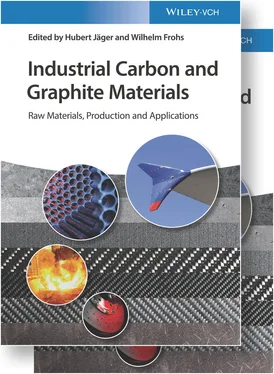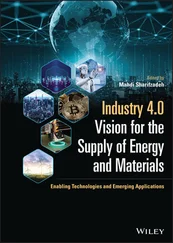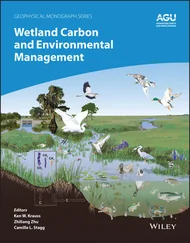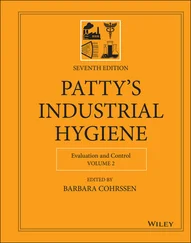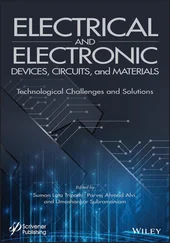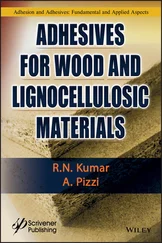The Acheson furnace has been used in the graphitization process in which heat treatment exceeding the temperature of 2000 °C is performed to produce the synthetic graphite electrode for steelmaking. The Acheson furnace has been developed in the 1990s and is widely used at present as the graphitization equipment. Adoption of the lengthwise graphitization (LWG) furnace in which the electric current is directly applied to energize a semifinished product (baked product) for graphitization in a short time has been initiated in the 1960s, and at present the LWG furnace stays as mainstream equipment in adoption for the graphitization process of the synthetic graphite electrode.
A baked product exhibits irreversible thermal expansion called the puffing in the graphitization process. A method of decreasing the puffing of needle coke is reported by Mochida et al. as follows [8]:
1 1. Reducing the contaminant atoms sulfur and nitrogen in the coke feed or coke.
2 2. Modifying pore distribution in the coke.
3 3. Changing the heating programs used in calcination and graphitization to control the evolution of contaminant gases.
4 4. Trapping the heteroatoms or modifying the time of their evolution (accelerating or delaying.
Nippon Steel Chemical Co., Ltd. (at present, Nippon Steel & Sumikin Chemical Co., Ltd.) has developed in the 2000s pitch needle coke with reduced puffing, and it is widely used.
In China where production of PC is grown, a similar process to remove the QI fraction is developed, and the production of the aggregate for the synthetic graphite electrode in electric arc furnace steelmaking is grown. An annual production volume of PC including needle PC with the grade lower than the regular grade is estimated to be approximately 500 000 t.
Typical properties of PC used as the aggregate in various applications are given in Table 6.1.3.6.
6.1.3.5. Environmental and Safety Aspects
The CAS number relevant to PC is 94113‐91‐4, and it contains little metal impurities, and the VM is low so that there is no report specific to the environmental impacts and safety of PC.
In the publication in 2010 based on the report of the PreSIEF, PC is exempted by European Chemical Agency (ECHA) from registration in REACH.
Table 6.1.3.6 Physical properties of pitch coke.
|
|
Proximate analysis |
|
|
|
|
|
Real |
Volatiles |
Fixed |
|
|
|
|
|
|
|
|
|
|
|
|
Elemental analysis |
Metal analysis |
|
|
|
density |
matter |
carbon |
Moisture |
Ash |
C |
H |
N |
S |
O |
FE |
Si |
V |
Mn |
|
| Production process |
Type |
(−) |
(%) |
(%) |
(%) |
(%) |
(wt%) |
(wt%) |
(wt%) |
(wt%) |
(wt%) |
(wt%) |
(wt%) |
ppm |
(wt%) |
References |
| Chamber |
Amorphous |
|
0.35 |
99.36 |
|
0.29 |
|
|
|
0.33 |
|
0.05 |
0.04 |
3 |
|
[20] |
|
|
1.974 |
0.31 |
99.43 |
0.13 |
0.13 |
98.31 |
0.45 |
0.62 |
0.3 |
0.28 |
0.0217 |
0.019 |
0.3 |
1.58 |
[21] |
| Delayed |
|
2.014–2.068 |
0.29 |
99.55 |
0.09 |
0.07 |
|
|
|
0.22 |
|
|
|
1 |
|
[22] |
|
|
2.014 |
0.29 |
99.55 |
0.09 |
0.07 |
98.68 |
0.34 |
0.62 |
0.22 |
0.12 |
0.012 |
0.0098 |
0.12 |
0.99 |
[21] |
|
Needle |
2.1 |
|
|
|
0.1 |
|
|
|
0.3 |
|
|
|
|
|
[23] |
|
|
2.107 |
|
|
|
0.09 |
|
|
|
0.25 |
|
|
|
|
|
[23] |
|
|
2.116 |
|
|
|
0.13 |
|
|
|
0.27 |
|
|
|
|
|
[23] |
|
|
2.13–2.14 |
|
|
|
0.02–0.05 |
|
|
|
0.3–0.4 |
|
|
|
|
|
[23] |
|
|
2.11 |
|
|
|
0.09 |
|
|
|
0.3 |
|
|
|
|
|
[24] |
|
|
2.13 |
|
|
0.1 |
<0.1 |
|
|
0.5 |
0.25 |
|
|
|
|
|
[25] |
1 1 Gambro, A.J., Shedd, D.T., Wang, H.W., and Yoshida, T. (1969). Chem. Eng. Prog. 65 (5): 75–79.
2 2 JP1140182C, US4116815 (1978). Process for preparing needle coal pitch coke.
3 3 JP1315627C, US4127472 (1978). Process for preparing a raw material for the manufacture of needle coke.
4 4 JP1425070C, US4311682 (1982). Process for preparing a graphite product.
5 5 Yoshida, S. (1977). Coal Chem. Ind. Future: 316.
6 6 Honda, H. (1970). Oil Off. J. Sci. Soc. 13: 934–937.
7 7 US20080003167A1 (2008). Method of producing needl coke for low CTE graphite electrodes.
8 8 Mochida, I., Fujimoto, K., and Oyama, T. (1994). Chem. Phys. Carbon 24: 158–179.
9 9 JPA1992‐348186 (1992). Method of producing needl coke.
10 10 JPA1995041770 (1995). Method for producing needle coke raw material.
11 11 JPA1982‐141487 (1982). Method for producing needle coke raw material.
12 12 JPBS49049004 (1974). Method of producing needl coke.
13 13 CN1793287A (2005). Method of producing needl coal pitch coke.
14 14 CN101993704A (2009). Method of producing needl coal pitch coke.
15 15 CN101294090A (2007). Method for producing needle coke raw material.
16 16 CN100362081C (2006). Method of producing needl coal pitch coke.
17 17 CN1118537C (2000). Method of producing needl coke.
18 18 Kurami, E. (1973). Oil Off. J. Sci. Soc. 16: 366–372.
19 19 Kakuta, M. et al. (1981). TANSO 106: 102–105.
20 20 (1968). Carbon & Graphite Handbook.
21 21 Future of Coal Chemical Industry.
22 22 (1972). Introduction to Carbon Materials.
23 23 (1984). Introduction to Carbon Materials, Revised Edition.
24 24 Nishizawa, S. (2006). Introduction to Carbon Materials, New Edition, 81–90. The Carbon Society of Japan.
25 25 Mochida, I., Fujimoto, K., and Oyama, T. Chem. Phys. Carbon 24: 130.
Конец ознакомительного фрагмента.
Текст предоставлен ООО «ЛитРес».
Прочитайте эту книгу целиком, купив полную легальную версию на ЛитРес.
Безопасно оплатить книгу можно банковской картой Visa, MasterCard, Maestro, со счета мобильного телефона, с платежного терминала, в салоне МТС или Связной, через PayPal, WebMoney, Яндекс.Деньги, QIWI Кошелек, бонусными картами или другим удобным Вам способом.
